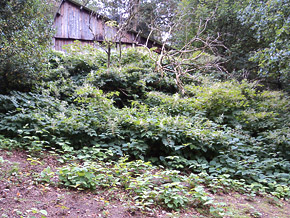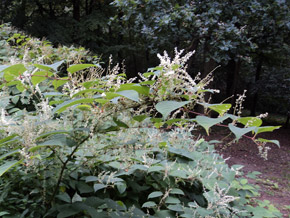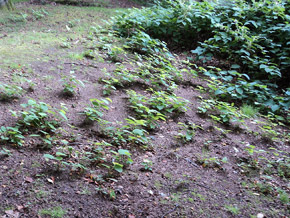Japanese Knotweed
Japanese Knotweed and the issues surrounding it has been raised in the recent months, particularly in relation to house sales. Some lenders take a pragmatic view of the plant species whilst others will refuse to lend.
The plant is readily identifiable and is a herbaceous species. It has heart shaped leaves with a lush green colour but has an unusual stem with leaf joints arranged alternatively on the stem giving a zigzag shape. The plant grows almost anywhere and can grow up to 3m in height in one season. The plant flowers with small greenish white clusters between July and September. (see photos)
The plant generates from Rhizome in the soil which can shoot with little water or with only small sections of Rhizomes being present. The plant, will establish and spread very quickly and the Rhizomes can grow up to 20m in length. The plant can grow at a rate of 100 to 120mm per day. The plant is highly resistant to treatments and is very hardy.
It is an offence under the Wildlife and Countryside Act 1981 To allow the plant to leave the land from which it is growing. It is not an offence for the plant to be growing on a site but it must be contained within it. It is an offence to cause or allow plant to grow outside the boundaries of a particular site and it is an offence for the removal from site the plant and/or soil in which it may be contained.
A wide range of treatments are available but need to be applied over the course of a number of seasons and in a controlled and coordinated manner. Trials are being undertaken with Aphids, but these are at an early stage.
Householders must also consider the Property Mis Descriptions Act 1992 when selling or (re) mortgaging for any reason. To conceal an outbreak of knotweed is an offence under this act, particularly if the property is being sold.
If you suspect you may have an outbreak or ‘stand’ of this plant, it is important that a reputable treatment company is contacted and an appropriate treatment regime put in place. Under the terms of a mortgage you may be required to contact the lender.
There are lenders who will refuse to lend on a property even if the growth of the plant is in an adjoining property.







